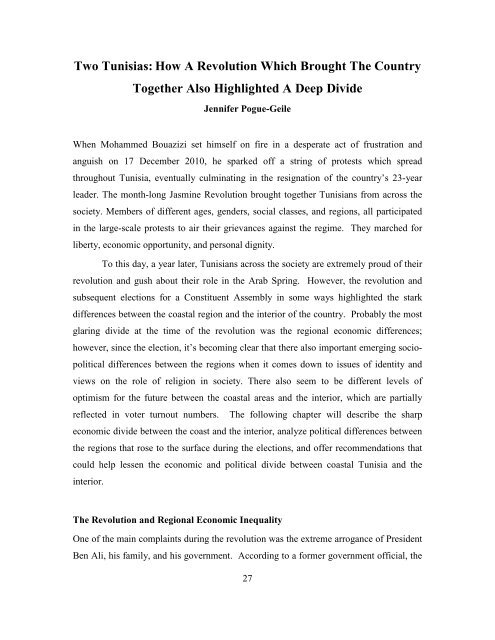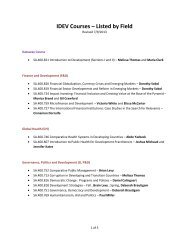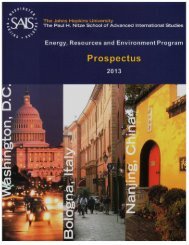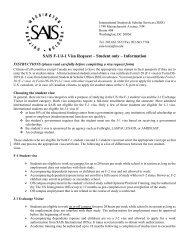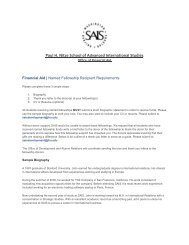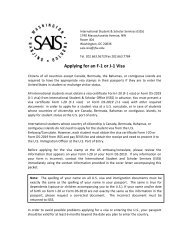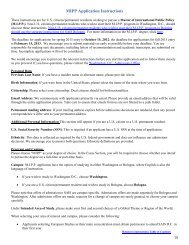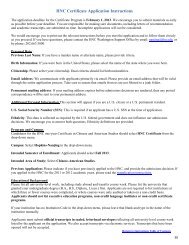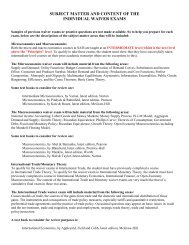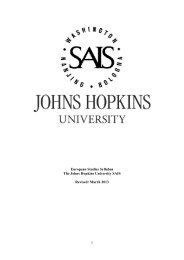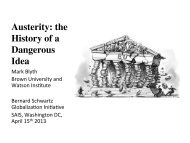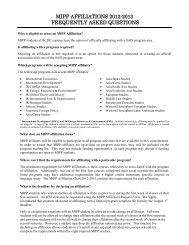Tunisia: Understanding Conflict 2012 - Johns Hopkins School of ...
Tunisia: Understanding Conflict 2012 - Johns Hopkins School of ...
Tunisia: Understanding Conflict 2012 - Johns Hopkins School of ...
Create successful ePaper yourself
Turn your PDF publications into a flip-book with our unique Google optimized e-Paper software.
Two <strong>Tunisia</strong>s: How A Revolution Which Brought The Country<br />
Together Also Highlighted A Deep Divide<br />
Jennifer Pogue-Geile<br />
When Mohammed Bouazizi set himself on fire in a desperate act <strong>of</strong> frustration and<br />
anguish on 17 December 2010, he sparked <strong>of</strong>f a string <strong>of</strong> protests which spread<br />
throughout <strong>Tunisia</strong>, eventually culminating in the resignation <strong>of</strong> the country’s 23-year<br />
leader. The month-long Jasmine Revolution brought together <strong>Tunisia</strong>ns from across the<br />
society. Members <strong>of</strong> different ages, genders, social classes, and regions, all participated<br />
in the large-scale protests to air their grievances against the regime. They marched for<br />
liberty, economic opportunity, and personal dignity.<br />
To this day, a year later, <strong>Tunisia</strong>ns across the society are extremely proud <strong>of</strong> their<br />
revolution and gush about their role in the Arab Spring. However, the revolution and<br />
subsequent elections for a Constituent Assembly in some ways highlighted the stark<br />
differences between the coastal region and the interior <strong>of</strong> the country. Probably the most<br />
glaring divide at the time <strong>of</strong> the revolution was the regional economic differences;<br />
however, since the election, it’s becoming clear that there also important emerging sociopolitical<br />
differences between the regions when it comes down to issues <strong>of</strong> identity and<br />
views on the role <strong>of</strong> religion in society. There also seem to be different levels <strong>of</strong><br />
optimism for the future between the coastal areas and the interior, which are partially<br />
reflected in voter turnout numbers. The following chapter will describe the sharp<br />
economic divide between the coast and the interior, analyze political differences between<br />
the regions that rose to the surface during the elections, and <strong>of</strong>fer recommendations that<br />
could help lessen the economic and political divide between coastal <strong>Tunisia</strong> and the<br />
interior.<br />
The Revolution and Regional Economic Inequality<br />
One <strong>of</strong> the main complaints during the revolution was the extreme arrogance <strong>of</strong> President<br />
Ben Ali, his family, and his government. According to a former government <strong>of</strong>ficial, the<br />
27


